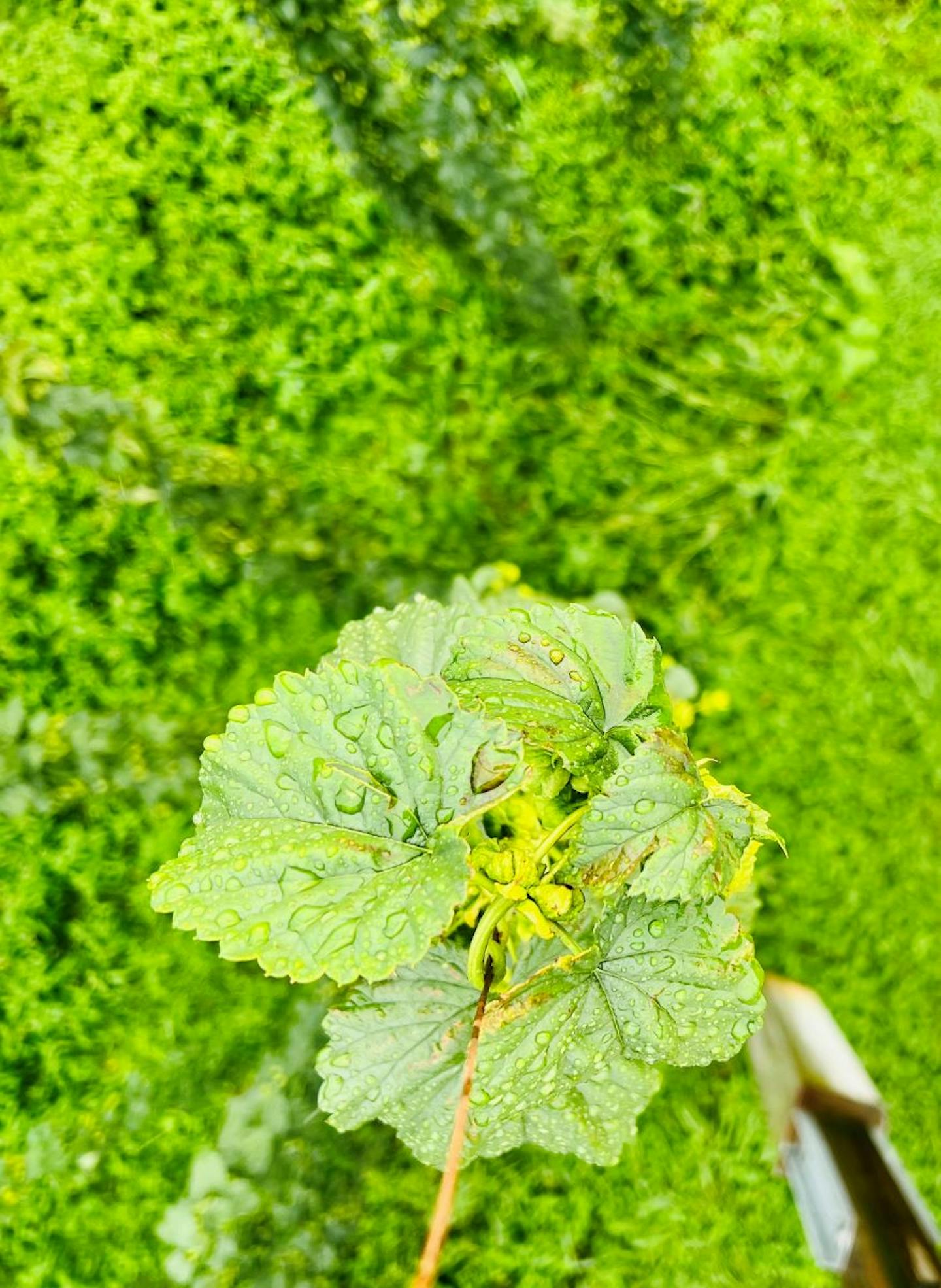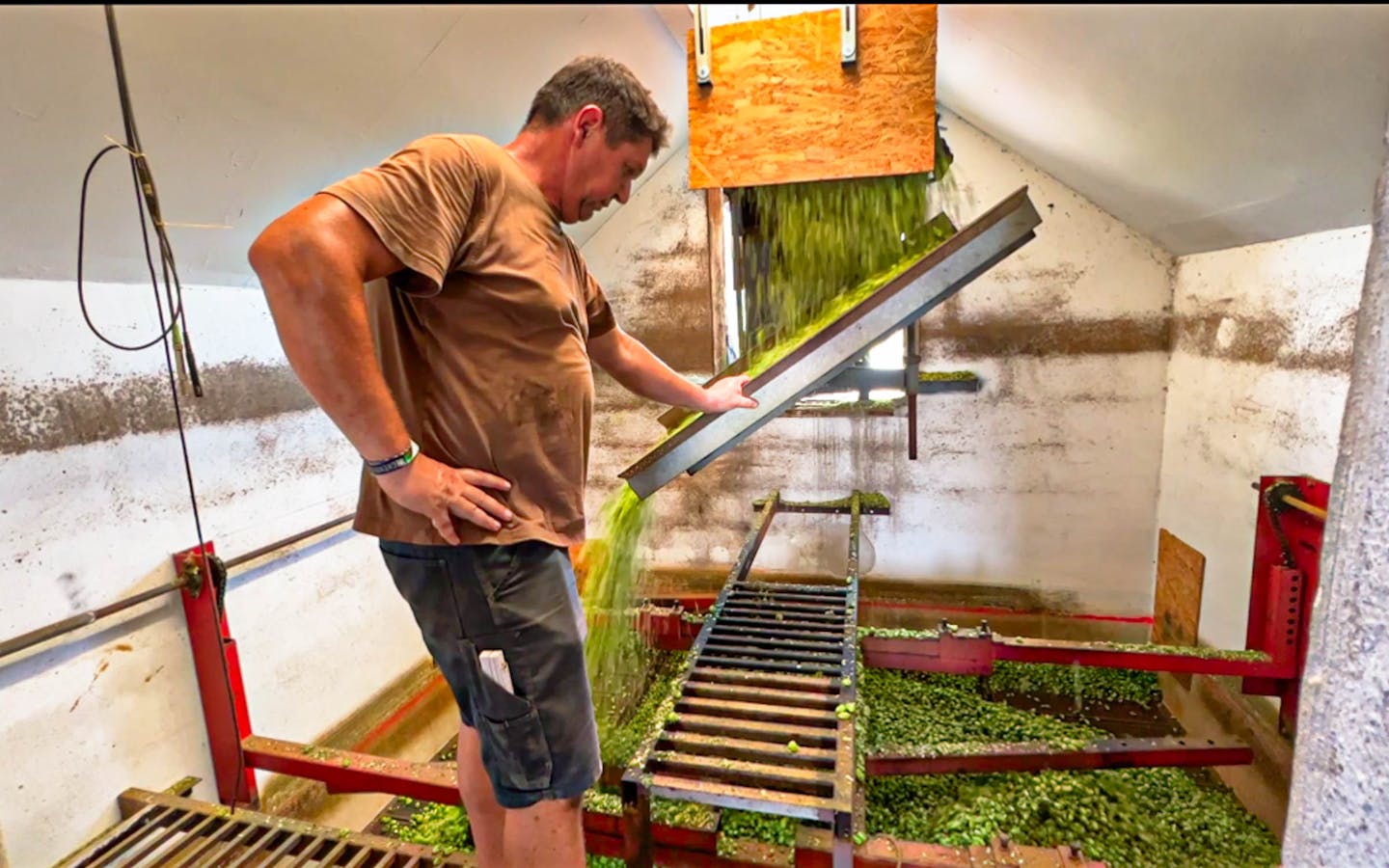Community, tradition, and duty in a time of certain change
When harvest time arrives, it is time to get a move on! Families and agricultural workers hustle to fields and barns to begin converting the plant-based expression of generations of hop growers traditions into hop products for the beer drinking world aka Bingo Beer Co and you!
There aren’t a ton of different varieties of hops grown in the Tettnang. It is an exceedingly small area after all. Hop growers do plan out a schedule of their hops to reach peak maturity at different times, though, through the 3-4 weeks of harvest season. Some find their Tettnanger crop is best in that first week of the season (usually the very beginning of the last full week of August). Others may find a field of Hallertau in a great spot and give their Tettnang an extra few days to develop to a point where they find it to be a truly complete expression of terroir. No matter the schedule of harvest, once you get plucking, it’s a nearly a 24-hours-a-day operation from first field cut to last hop baled.
There are now about 150 families growing hops in the Tettnang down from several thousand in the 50s. Though the number of families growing is much lower, the acreage committed to growing hops is at nearly an all-time high, however. Competition for acreage is real as new hop-growing land really only becomes available when another family moves on from this legacy of the land. And friendly competition to be recognized amongst peers is as much a point of pride for Tettnang hop growers as it would be for anyone in an esteemed industry. Beyond that, it is the overwhelming sense of community amongst growers, families, and citizens that leaves the most lasting impression. Farmers root for each other’s success, share ideas, and come to each other’s aid to assure the quality, consistency, and endurance of hops as the defining good of a region where more and more land is bought for summer homes overlooking the Bodensee (Lake Constance) and ever encroaching climate change brings trepidation for the eponymous landrace variety, Tettnang Tettnanger.
Farmers can be a super chatty bunch. Though for many of us, discussing things of true passion does bring out the gift of gab. When chatting with farmers, they are quick and proud to let you know just how many generations the family has been tending their fields and growing their hops amidst apples, pears, mirabelles, and other fruit and veggies. There is excitement to show the barns in which their fathers and grandfathers used to process hops from their era while also so much pride to share the technological advancements and sheer volume of new production capacity that exist in new family facilities. Farmers are equally eager to share the means by which field hands and workers can get a respite from the heat and intensity of the labor too. Hop kilns are hot and summertime fields are hot, and only getting hotter.
It is easy to forget that terroir is as much an expression of the means by which communities engage with and create the products they grow in a place as it is the soil, sunlight, moisture, and heat that grow the product in place. Tettnang’s esteemed excellence as a product took generations to develop and must be maintained at the highest standards to assure that Tettnanger is Tettnanger season over season. The intimacy and knowledge of the land and season over generations makes farmers the metaphoric canary in the coal mine for regions and communities. They are the bellwether of climate change. Farmers constantly remind us how summers are consistently hotter, and staying hotter later, and that rains are less and less reliable even in a region defined by a remarkable climate moderator in the form of the Bodensee. When we arrived, the heat pushed into the mid-90s. Several degrees warmer than average for the time of year. The heat of the day led to near catastrophic storms our first night. Several orchards and hop fields were total losses as 100 MPH derecho winds rushed on fields flush with fruit toppling trees, poles, hops, and hopes. Even those that did not experience such loss did not escape. Countless growers woke to hundreds if not thousands of hop bines ripped to the ground.
There is a Hop Picking party in Tettnang that started decades ago as a growers hangout in the still of the night and has grown into a calm-before-the-storm party for the season community-wide. One of the last pieces of hop production on the farm is the drying of hops from a fresh-from-the-field water content of about 80% to a ready for processing at the pelletizer percentage of 10%. This drying is not particularly laborious but it is time-consuming and is kinda reminiscent of late night traditions of smoking meats for BBQ, watching temperatures and assuring standards of the community are maintained. These late nights drying hops eventually led to hangouts and beers in kilns to keep friends company. The party now is an invitation to the entire community including the occasional outsider American beer guys. On the night of this year’s party, the lightning, rain, and wind couldn’t keep the spirits down. Oompah bands in lederhosen kept time in traditional tunes. Local lagers were popped from bottles and shared amongst us hundreds finding shelter from the storm. Once the rain passed, the grill fired back up and tables were surrounded with sausage noshing/ beer sloshing merriment. It was this storm though that ripped hop bines to the ground and brought whole hop fields and orchards down as well. The merriment of the last free night before the official beginning of harvest season behind them, the community rallied out to assist each other the next morning, lifting each other off the ground to meet the call of duty to assure another harvest in Tettnang provides as it has for generations.


















